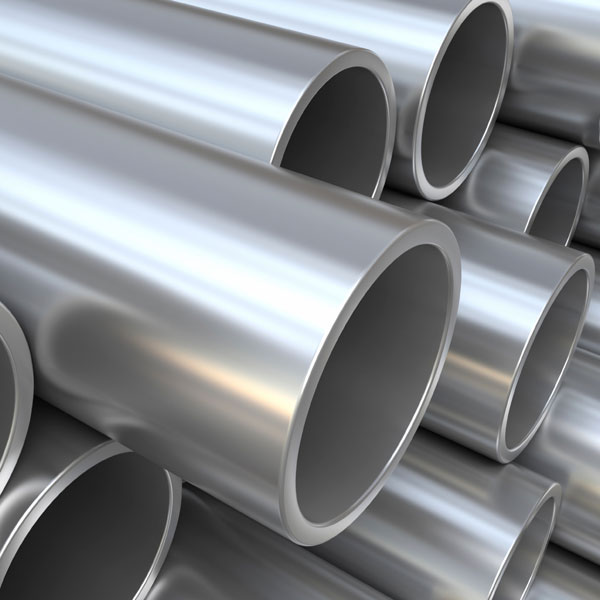
Stainless steel 410 pipes are among the most versatile and durable materials used in industrial, commercial, and residential applications. Known for their exceptional strength and corrosion resistance, these pipes are ideal for environments where reliability and long service life are critical.
This blog explores the properties, applications, and benefits of stainless steel 410 pipes to help you understand why they are a preferred choice across various industries.
What is Stainless Steel 410?
Stainless steel 410 is a martensitic grade of stainless steel containing chromium as its primary alloying element. It offers a balance of strength, corrosion resistance, and hardness. Unlike austenitic stainless steels, 410 can be heat-treated to enhance its mechanical properties, making it suitable for high-stress applications.
Chemical Composition of Stainless Steel 410
- Chromium (Cr): 11.5-13.5%
- Carbon (C): Up to 0.15%
- Manganese (Mn): Up to 1.0%
- Silicon (Si): Up to 1.0%
- Phosphorus (P): Up to 0.04%
- Sulfur (S): Up to 0.03%
Key Properties of Stainless Steel 410 Pipes
- Corrosion Resistance
Stainless steel 410 pipes exhibit moderate corrosion resistance. Their chromium content forms a passive oxide layer, protecting the surface from oxidation and mild corrosive environments. - High Strength
These pipes are known for their excellent tensile strength and hardness, especially after heat treatment. - Temperature Resistance
SS 410 pipes can perform well in temperatures up to 650°C, making them suitable for heat-intensive applications. - Machinability
The material is relatively easy to machine in its annealed condition, making fabrication convenient. - Magnetic Properties
Unlike austenitic grades, stainless steel 410 is magnetic, which can be an advantage in certain applications.
Applications of Stainless Steel 410 Pipes
The properties of SS 410 pipes make them suitable for a wide range of industries and applications.
1. Oil and Gas Industry
Stainless steel 410 pipes are widely used in oil and gas extraction processes due to their ability to withstand high pressures and resist corrosion in mildly acidic environments.
2. Petrochemical Plants
These pipes are used for transporting chemicals, thanks to their resistance to oxidation and moderate corrosive agents.
3. Automotive Industry
SS 410 pipes are commonly employed in exhaust systems, structural components, and heat exchangers because of their strength and temperature resistance.
4. Food Processing
Although not as corrosion-resistant as austenitic grades, 410 pipes are used in food processing equipment where their strength is advantageous.
5. Power Plants
Their temperature resistance makes these pipes suitable for boiler tubes, heat exchangers, and other high-temperature applications.
Advantages of Using Stainless Steel 410 Pipes
1. Durability
Stainless steel 410 pipes offer long service life, even in demanding environments, thanks to their high strength and corrosion resistance.
2. Cost-Effective
Compared to other stainless steel grades, 410 pipes are more economical while still providing excellent mechanical properties.
3. Versatility
These pipes can be used in a wide variety of applications, making them a versatile choice for manufacturers and engineers.
4. Ease of Fabrication
Stainless steel 410 is easy to weld, machine, and heat-treat, ensuring smooth fabrication processes.
5. Low Maintenance
The moderate corrosion resistance of SS 410 pipes reduces maintenance requirements, saving time and costs.
Limitations of Stainless Steel 410 Pipes
While stainless steel 410 pipes are versatile, they do have some limitations:
- Lower Corrosion Resistance: Compared to austenitic grades like SS 304 or SS 316, 410 offers lower resistance to highly corrosive environments.
- Brittleness in Certain Conditions: Without proper heat treatment, 410 pipes can become brittle.
- Limited Weldability: Welding requires pre- and post-heating to avoid cracking.
Heat Treatment of Stainless Steel 410 Pipes
Heat treatment plays a crucial role in enhancing the properties of SS 410 pipes. The typical processes include:
1. Annealing
- Temperature: 815°C to 900°C
- Purpose: Improves machinability and reduces brittleness.
2. Hardening
- Temperature: 980°C to 1035°C
- Purpose: Increases hardness and tensile strength.
3. Tempering
- Temperature: 200°C to 600°C
- Purpose: Balances hardness and toughness.
Why Choose Stainless Steel 410 Pipes?
When selecting materials for projects requiring high strength and moderate corrosion resistance, stainless steel 410 pipes stand out as a reliable choice. Their heat-treatable properties allow engineers to customize the material’s performance according to specific application requirements.
Additionally, their cost-effectiveness makes them an attractive option for industries operating within budget constraints without compromising on quality.
Maintenance Tips for Stainless Steel 410 Pipes
- Regular Cleaning: Use mild detergents to remove dirt and contaminants.
- Avoid Harsh Chemicals: Minimize exposure to highly acidic or alkaline substances.
- Inspect Regularly: Check for signs of corrosion or wear to address issues early.
- Proper Storage: Store pipes in a dry, well-ventilated area to avoid moisture-related damage.
Conclusion
Stainless steel 410 pipes are a versatile and durable solution for various industrial and commercial applications. Their excellent strength, heat resistance, and moderate corrosion resistance make them an ideal choice for demanding environments.